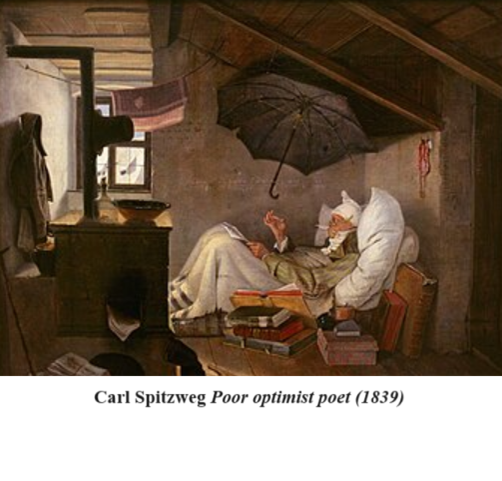
Open and Particular
The Cellist, a Bellydancer & Other Distractions
by Libby Sommer
Ginninderra Press, 2022, 69 pages, $20
Flat White, One Sugar
by Libby Sommer
Ginninderra Press, 2024, 102 pages, $22.50
The Invisible
by Alessio Zanelli
Greenwich Exchange, 2024, 97 pages, $33
In his excellent book The Virtues of Poetry, James Longenbach writes, “No great poem ever stood in the way of the future, foreclosing imaginative possibilities by asking us to endorse a narrow vision of our past or a sectarian arrangement of our contemporaries.” In an era when so much poetry demands that we narrowly focus on the past as a time of racism, sexism and colonialist violence, this message is needed more than ever. It serves to remind us that neo-virtues like “trans-inclusion” and “anti-racism” are not conducive to the creation of literature, for, in the end, what has protest poetry ever offered but anger, recrimination and sanctimony?
Fortunately, there are still many poets who resist the temptations of narcissistic self-righteousness. Libby Sommer, a prolific Australian writer of fiction and poetry, eschews the moral posturing of the ideologically pure poet to cultivate an aesthetic that is observant, curious and open to experience. Likewise, Alessio Zanelli, an Italian poet who writes exclusively in English, avoids the temptations of didacticism to create poems that speak memorably of human universals.
Of course, the virtues of a good poem are a different matter from moral virtue. Longenbach offers a thought-provoking discussion of poetic virtues, offering boldness, openness and surprise as important examples. Of these virtues, the one which Sommer possesses in spades is openness. However, in a typical Sommer poem, openness often works in conjunction with another of Longenbach’s poetic virtues—namely, particularity. It is the exuberant interplay between openness and particularity which characterises Sommer’s poetry at its strongest. In both of her collections for Ginninderra Press, these qualities are much in evidence. Consider the opening lines of her poem “Bronte Beach”:
The surf’s been hammered with rain,
and along the pavement open-faced cafés wedge side by side:
compact, glass-fronted, in flattened
Art Deco buildings, with competing menu boards.
At first blush, these lines might seem as breezy and casual as a trip to the beach, but on closer consideration, we see the particularity of her observation. In just four lines, she has reported on the surf conditions, the open design of the restaurants, the dominant style of architecture and the unapologetic competitiveness of the Sydney café scene. As a former Sydneysider, I am impressed by the accuracy of her impressions, by her ability to capture the genius loci of Sydney’s eastern suburbs. At times, she utilises a painterly attention to colour, as when she writes, “A white-hulled speedboat appears / in the grey-blue, travelling north”, or when she later depicts the same speedboat “out there on the pastel-pink ocean, / disappearing behind the haze”.
A poem with similar virtues is “Lying on a Harbour Beach at Noon”, a hymn to the pleasures of Sydney sunlight:
There is an opening out of the self which happens
when the sun is high in a cloudless blue
and its warmth sinks into the body.
It is openness which Sommer praises in this poem, the “opening out of the self” to the gentle pleasures of light and warmth. In Sommer’s telling, there is a close relationship between being open and being warm, for people who isolate themselves are deprived of the revitalising power of nature and relationships. If this makes “Lying on a Harbour Beach at Noon” sound like a doctrinal poem, it avoids that fate by keeping one foot planted in the particular. What could have been an abstract rumination remains personal and particularised, grounded in a single body, at a certain beach, at a particular time of day. In other words, it is the give-and-take between openness and particularity which gives her poems their unique charisma.
These two virtues, openness and particularity, account for Sommer’s ability to find the poetry in brief encounters and fleeting impressions. Tuning in on small details that most poets would overlook, she creates poetry out of the ephemera of daily life. A good example of this approach is “The Bellydancer”, in which she economically describes the movements, costume and inner life of the dancer:
shaking, shimmering, throbbing
her skirt flutters
hips held firm in gold
her eyes translucent
in the dream of her dance
enraptured
Like most of Sommer’s poems, “The Bellydancer” is noteworthy for its closely observed detail and its sensory immediacy. Though Sommer does draw on memories, her preference is for the present moment, as shown by her general favouring of the present tense. In her newest collection, Flat White, One Sugar, Sommer dedicates the whole first section, “Out and About”, to daily activities and chance encounters, throwing us into the midst of daily life. She dedicates the opening poem, “Jogger on My Heels” to a jogger she passes each day on her daily walks, “A Refuge” describes a favourite bakery, and “Tactics” takes us inside the game plan of a female tennis player as a leaf-blower does its best to distract her. What links these disparate poems is Sommer’s curiosity and her faith in the marvels of fortuity. One of the finest demonstrations of her priorities comes in the aptly named “Transience”. Like many of her most beautiful passages, it combines sunlight, water and open expanses of sky:
A luminous, tangerine, and blazing expanse
burst out to the left of the blue
from the harbour to the city as the western light
lowered itself behind concrete high-rises.
She ends this rich paragraph by quietly observing, “We knew we had to seize / this fleeting moment.” If you were looking for a motto to sum up the poetic stance of Libby Sommer, you could certainly do worse than that.
Where Sommer’s work celebrates the immediate and particular, Alessio Zanelli is often more reflective and philosophical. This is particularly the case when he contemplates his mortality, as he does in a substantial number of poems from “The Invisible”. Fortunately, Zanelli’s poems on this topic reveal two of his main virtues as a poet: the capacity for surprise and a keen awareness of processes of change. Whenever these two virtues come together, Zanelli achieves some powerful effects. The crepuscular “A Walk at Dusk” is one such example. The poem’s simple diction and conversational style belie its weighty subject matter, yet as we read on, we realise that the poet, now in his sixties, is offering his thoughts on ageing:
Some say the twilight’s best
enjoyed by rocking on
the porch. Until it’s dark.
I think it is no time
to rest. Its hues can be
much brighter than the day’s.
Zanelli delivers a couple of surprises in this opening passage. The first one comes with the truncated sentence, “Until it’s dark”, which intimates that the twilight was his trope for ageing, just as “dark” is his word for death. The second surprise comes with Zanelli’s assertion that twilight’s “hues can be / much brighter than the day’s.” Accustomed to more sombre reflections on mortality, I was pleasantly surprised by these lines, which offered a moving affirmation of the pleasures of old age. Here, as at many other points in the collection, Zanelli combines the virtue of surprise with a sharp awareness of change to create a fresh poem on a traditional theme.
We can see a similar approach in the wonderfully titled “One Last Gin and Tonic at La Hacienda”. The poem begins with a light-hearted, conversational feel, offering the snappy opening lines: “Another G&T please, / with some orange peel”. But as the poem draws on, the poet subtly draws attention to his age, contrasting himself with the “cool bartenders / quick and gentle youths”. It is the youthfulness of the bartenders which makes us realise the comparative age (and insobriety) of the speaker. Perhaps he could once drink with the best of them, but he now inspires mild concern from the bartenders, who think a man of his age should be getting enough sleep. Zanelli is again drawing our attention to change and ageing, though in a more comic vein than “A Walk at Dusk”. Put another way, having first surprised us with the poem’s hip setting, Zanelli throws another curve ball by highlighting the effects of age, and the necessity of coming to terms with it. As he wisely, if begrudgingly, acknowledges in closing the poem:
[T]he time has come,
however bad it all still feels,
to put down the Copa de Balon
and head home.
Themes of time, ageing and mortality can sometimes be confronting. As much as I love the poetry of Galway Kinnell and Philip Larkin, their bleaker poems on these themes are not something to turn to in moments of despair. But the spirit of Zanelli is closer to D.H. Lawrence, one of the few canonical poets who finds pleasures and consolations in old age. Another splendid example is “What Little Remains of the Winter”, which, despite its frosty title, ends with a surprising image of infinitude and wonder:
I’m leaving every mental eddy to the quiet of the clear night,
my raided head to the softness of the pillow,
but not before one last glance up above,
aware that I can see at the most three thousand stars
among about four hundred billion more.
Though Sommer and Zanelli differ significantly on the surface, they are both writers who have developed their craft and now exhibit certain poetic virtues. Notable for its big curiosity and openness to experience, Sommer’s poetry offers immediacy and freshness of perception. Zanelli, on the other hand, revisits timeless topics, but he approaches them from new angles and perspectives, bringing a perpetual sense of surprise. Both poets remind us that the true purpose of the poet is not to lecture or indoctrinate readers, but to make them think about life and their environment in new ways.
Sean Wayman is a poet and essay-writer who has published work in Australia, Canada and the United Kingdom. His poems “British Bencoolen” and “The Traveller” appeared in the May issue
A new collection of essays corrects the pessimistic view of race relations
Sep 29 2024
11 mins
I enjoyed the Voice losers’ silence. Their embarrassment was even more delicious
Sep 29 2024
13 mins
The Cancer Finishing School is essentially 'serious', also unfailingly witty and anecdotal
Sep 29 2024
7 mins







